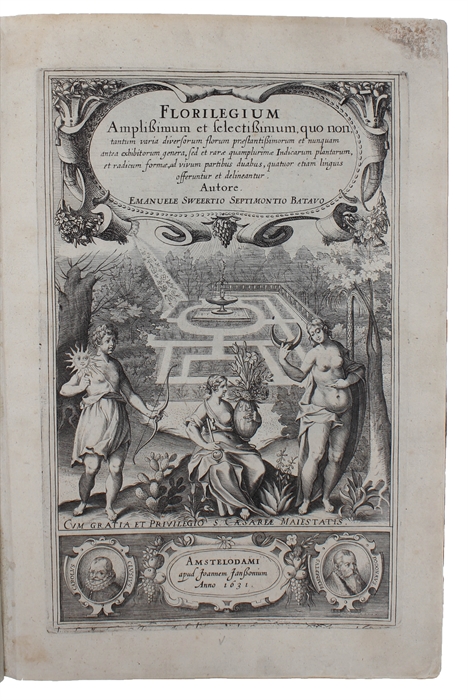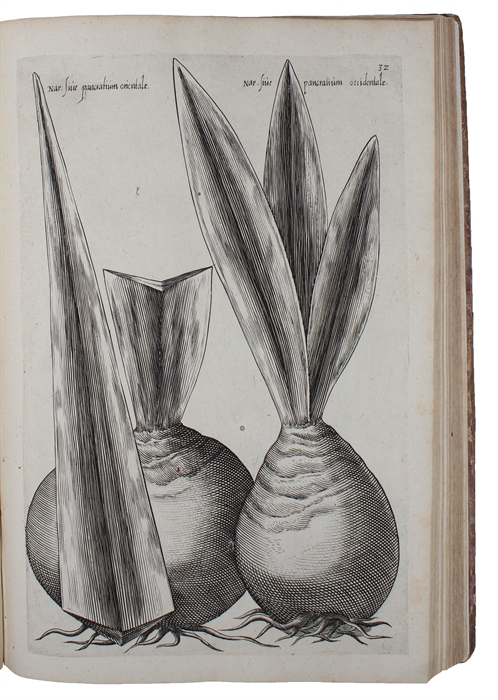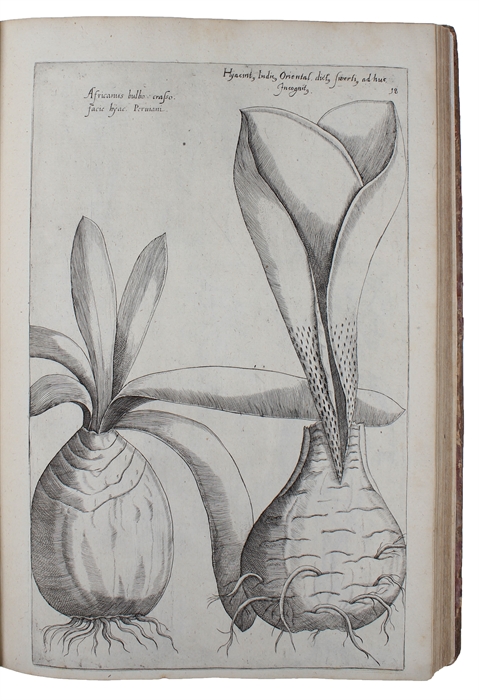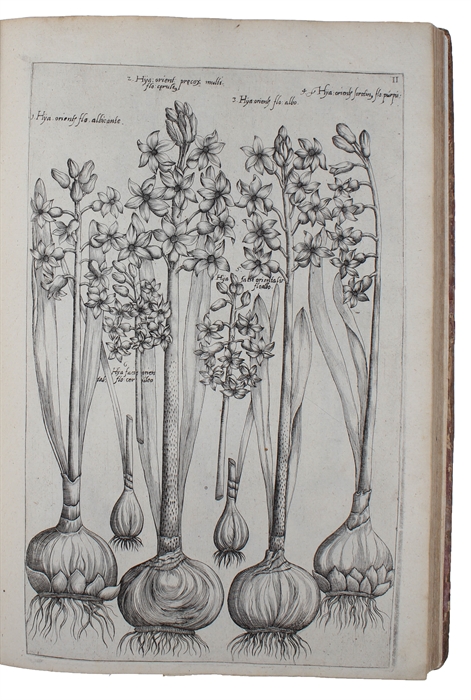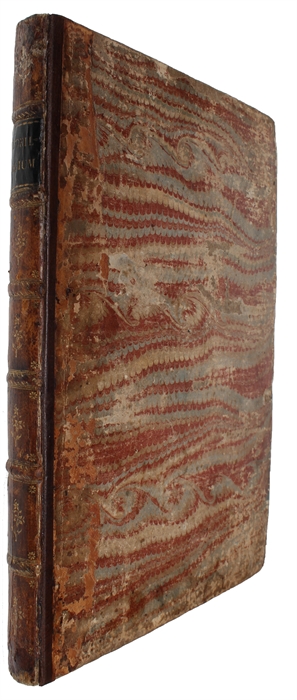THE FAMOUS FLORILEGIUM
SWEERTS (SWEERT - SWEERTIUS), EMANUEL.
Florilegium amplissimum et selectissimum ; quo non tantum varia diversorum florum praestantissimorum et nunquam antea exhibitorum genera, sed et rarae quamplurimae indicarum plantarum, et radicium formae, ad vivum partibus duabus, quatuor etiam linguis offeruntur et delineantur. Second title-page: Florelegii Pars Secunda, in qua agitur de praecipuis Plantis et floribus fibrosas radices habentibus: nec non arboribus speciosis et odoriferis, quibus Horti in utraque Germania decorantur. Opera & impensis. (2 Parts).
Amsterdam, Jan Janssonius, 1631.
Folio. Contemp. hcalf. Raised bands. Compartments gilt with floral stamps. Titlelabel with gilt lettering. Repairs to spine ends and hinges. Marbled coverpapers. Covers a bit rubbed. Endpapers renewed. Engraved frontispiece title, engraved portrait. (24),(10) pp. and 110 fine engraved plates (67 to the first part, 43 to the second), depicting 560 plants, usually life-size. A few minor brownspots.
Scarce early (the first 1612) edition of Sweert's famous Florilegium, at first intended to be both a catalogue for selling plants and bulps and a picture-book of plants, but the later editions (as here) became a true Florilegium for collectors and botanical scientists. The first part deals with bulbous species, and the second with species having "fibrous" roots (fibrosae radices). Thirty-three tulip heads are paraded in regular columns. The American contingent is represented by the sunflower, cactus, agave, pineapple and Canna. Sweerts and Johann Theodor de Bry were the first to establish the convention of portraying lower stem with bulb or root alongside severed upper stem and flower in order to reproduce the plant life-size on the page.
"Sweert prepared his Florilegium as a guide of his available stock for the Frankfurt Fair of 1612. The plates, depicting some 560 bulbs and flowers, were from the Johann Theodore de Bry Florilegium which in turn was based on that by Pierre Vallet. His attractively depicted bulbs sparked their popularity, leading to 6 editions of the work between 1612 and 1647, and a demand which would later result in "Tulipomania". At the time of the fair Sweert was in the employ of Emperor Rudolf II as head of his gardens in Vienna. He borrowed freely from plates that had been published before, so that many of those that appeared in the Florilegium had been cultivated in the gardens of King Henry IV of France at the Louvre." (Wikipedia).
Nissen, 1921. - Hunt, 196 (1612-edition).
Order-nr.: 51085

